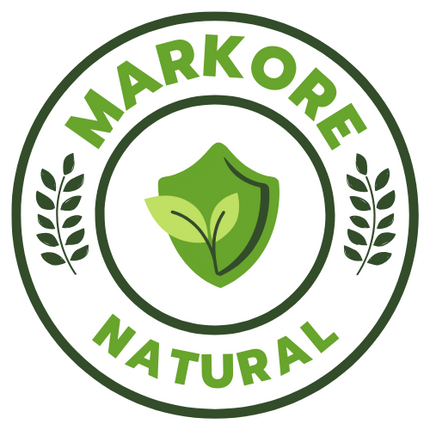In an era dominated by fast fashion and synthetic trends, the return to artisanal full-grain leather signals more than just a preference for aesthetics—it reflects a growing demand for enduring value, environmental accountability, and human-centered production. While vegan leather may present an ethical narrative on the surface, a closer inspection reveals deeper complexities. For discerning individuals seeking products that last, full-grain leather remains an unmatched material—resilient, repairable, and responsible by design.
Structure Built to Endure
Full-grain leather is crafted from the topmost layer of the animal hide, where the grain is tightest and the fiber structure remains intact. Unlike top grain, corrected, or synthetic alternatives, this material undergoes minimal surface correction, retaining all its natural markings and texture. These unique characteristics are not aesthetic flaws—they are signatures of authenticity and longevity. Over time, full-grain leather develops a natural patina that enhances its visual depth and tells a story of use and life, rather than decay.

In comparative performance, full-grain leather outlasts PU and PVC-based vegan materials by decades. A single wallet, belt, or case made with full-grain leather can often remain functional and beautiful for 20 years or more with simple care. By contrast, even high-quality vegan leather products show wear—such as peeling and cracking—within 6–24 months under normal use. When measured by lifecycle durability, full-grain leather emerges as a significantly higher-value material.
Cost-per-Use Over Sticker Price
Initial pricing often dominates buying decisions. However, full-grain leather reverses this equation. Although it requires a higher upfront cost, the material’s longevity means that fewer replacements are necessary. A full-grain leather wallet may cost twice as much as a synthetic equivalent—but if it lasts ten times longer, the lifetime cost is significantly lower. Repairs, where needed, are also more viable. Surface oils, professional conditioning, or artisan-led refurbishment can extend a product’s life almost indefinitely.
In contrast, synthetic alternatives are often cheaper to buy but expensive to replace. Mass-market vegan leather products are frequently designed for style turnover rather than lifecycle endurance, and once they fail structurally, they are difficult—if not impossible—to repair. The environmental and financial costs of repeated replacement accumulate, making the initial savings illusory.
A Sustainable Approach Grounded in Nature
Biodegradability, environmental footprint, and resource efficiency are critical metrics when evaluating materials in the sustainability era. Full-grain leather—especially when vegetable-tanned using plant-based tannins—is a naturally biodegradable material. If discarded, it breaks down without leaving behind microplastics or toxic residues. Tanning innovations have further reduced water usage, eliminated harmful chromium salts, and enabled solar-powered operations in several leading tanneries worldwide.
In contrast, vegan leather is typically petroleum-derived. The production of polyurethane and polyvinyl chloride involves significant chemical inputs and results in by-products that are energy-intensive to manage. Even plant-based vegan leathers (such as those made from cactus, pineapple, or apple waste) often require plastic binders to maintain structure and durability, limiting their biodegradability and recyclability. Most vegan leathers do not degrade naturally and contribute to landfill waste after relatively short lifespans.
Craftsmanship and Human Dignity
Full-grain leather is not compatible with fast production models. Its properties demand slower handling, deliberate cutting, and expert stitching—conditions that naturally favor smaller workshops and fair-wage artisan labor. This production environment supports craft preservation, encourages transparent sourcing, and reduces reliance on exploitative labor systems found in some fast fashion manufacturing zones.
By contrast, vegan leather is often produced in large-scale industrial operations that emphasize volume over value. While it may carry the appeal of being “animal-free,” its manufacturing ecosystem frequently lacks transparency regarding labor rights, safety, and environmental controls. The absence of animal materials does not automatically equate to a responsible or sustainable process.
Timeless Form, Evolving Meaning
Beyond the metrics and materials, full-grain leather holds cultural and emotional value. It is not designed for planned obsolescence. Instead, it improves with age—acquiring softness, depth of color, and a lived-in character that synthetic alternatives cannot replicate. From traditional saddlery to heirloom handbags, the leather industry has historically produced items meant to last, be repaired, and passed on. This longevity supports slower consumption and encourages intentional ownership—values aligned with a sustainable future.
As the global fashion economy pivots toward responsibility, full-grain leather remains relevant not in spite of its heritage, but because of it. It is a material that rewards patience, supports skilled hands, and reduces environmental harm across its life cycle.
Conclusion
Full-grain leather is more than just a premium material—it is a deliberate choice. Rooted in nature, refined through generations of craft, and supported by ethical production systems, it stands as a quiet rejection of wasteful, fast-moving consumer culture. For those who seek value that lasts and materials that tell a story, full-grain leather continues to set the standard.






